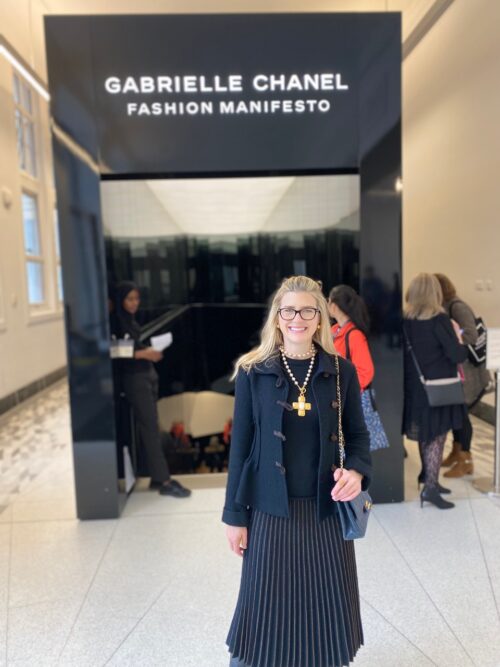By Stuart Dyer
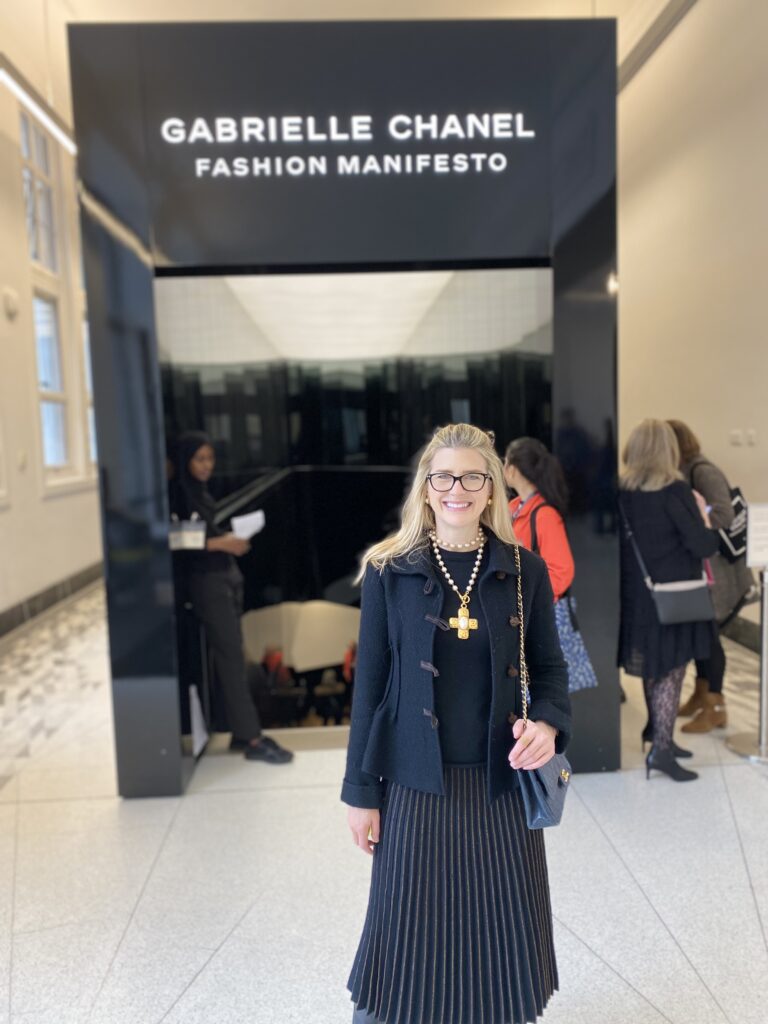
At the Victoria & Albert Gabrielle Chanel Fashion Manifesto exhibit.
The Victoria & Albert Museum in London currently has its exhibition, Gabrielle Chanel Fashion Manifesto on display. It runs until February 25, 2024, and is the UK’s first exhibition entirely devoted to the life and work of the pioneering designer Gabrielle ‘Coco’ Chanel. The show features more than 200 looks by the French couturière. It is the first time they have all been displayed together – alongside jewelry, accessories, cosmetics, and fragrance. One of my favorite parts of the exhibit was the room dedicated entirely to Chanel’s costume jewelry. It is filled with beautiful pieces created mostly by the jewelry makers Gripoix and Goossens.
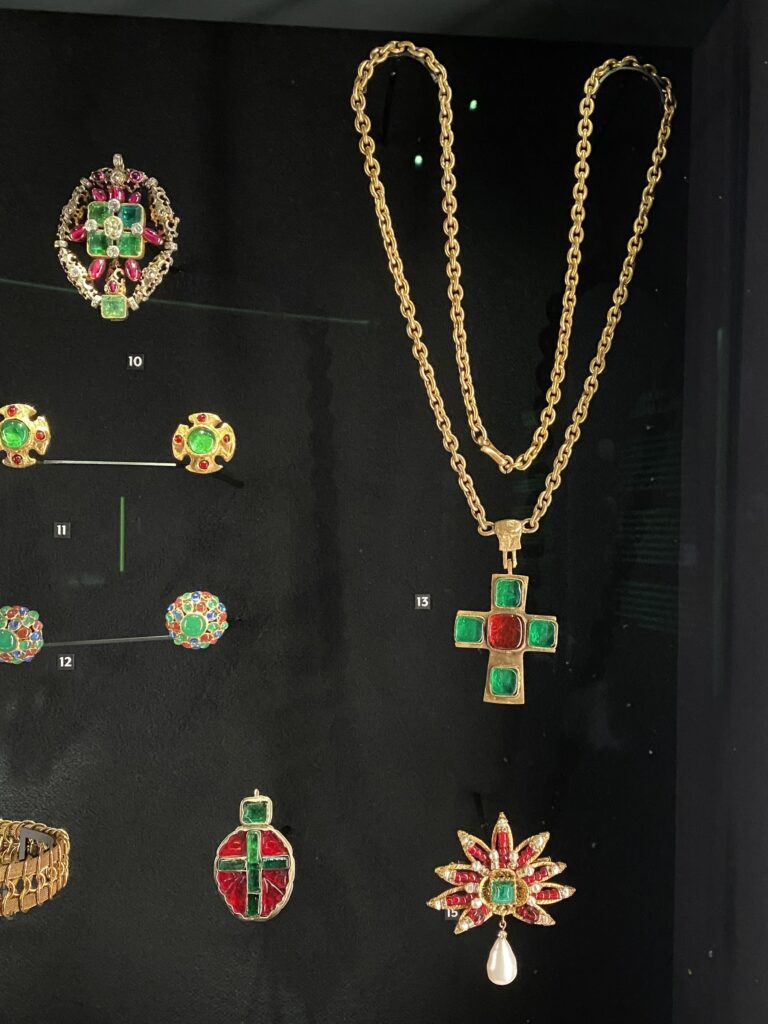
Assorted case of Chanel jewelry.
Chanel first began making costume jewelry in 1924 because she “felt that it was refreshingly free of arrogance, in a period that tended towards ostentatious displays of luxury.” Chanel did design and sell precious jewelry, but she felt that costume jewelry allowed her to be more creative and to experiment with colors and materials. She also enjoyed wearing real and costume jewelry at the same time – a radical concept during this era. She would wear strands of real and fake pearls intertwined together and wear real gemstones with fake. She even combined glass and precious stones in a single piece of jewelry. Chanel loved to challenge conventions – particularly those of the aristocracy and bourgeoisie. Once she introduced costume jewelry to her line, it quickly became an integral part of the ‘Chanel’ look.
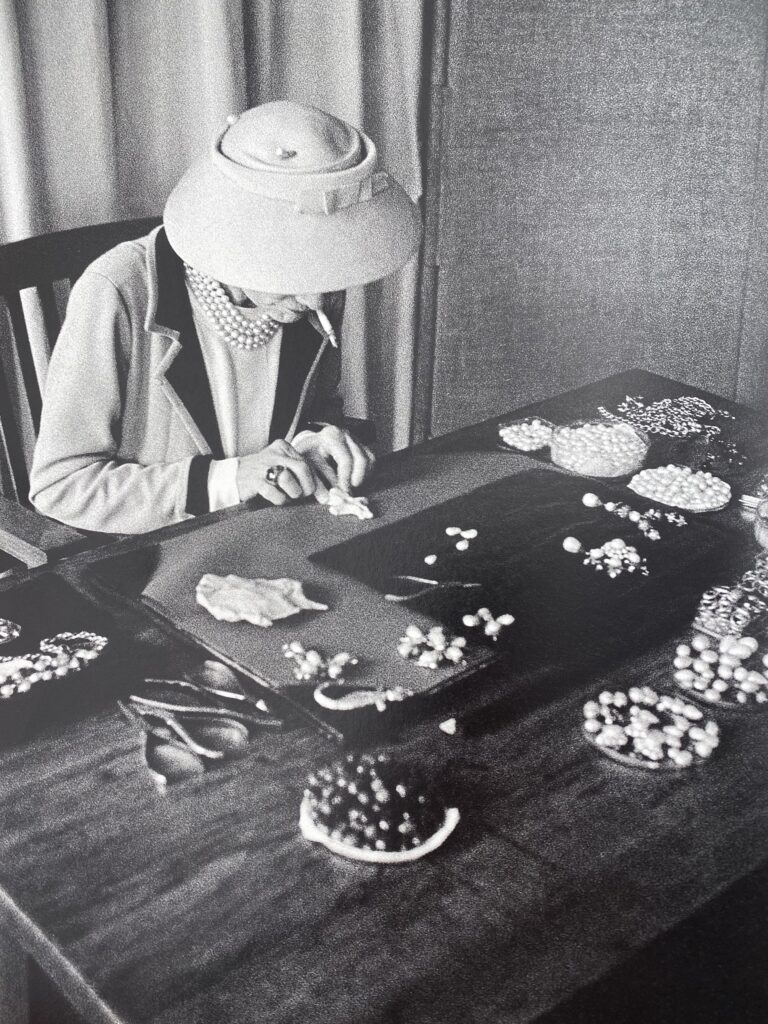
Gabrielle Chanel designing jewelry in 1957.
In the 1930s botanical forms began to appear in Chanel’s jewelry. The Parisian atelier Maison Gripoix made pieces using their ‘pate de verre’ or glass paste technique. To create a flower design they would create individual petals out of pate de verre which they would then assemble to create a beautiful three-dimensional piece.

Case of pate de verre Chanel jewelry made by Maison Gripoix.

Chanel pate de verre necklace and earrings made by Maison Gripoix in 1938.
In 1939, due to WWII, The House of Chanel stopped operations and remained closed until 1954 when it re-opened for business. Chanel revived the costume jewelry line, and it was during this time period that some of the most spectacular pieces were created.
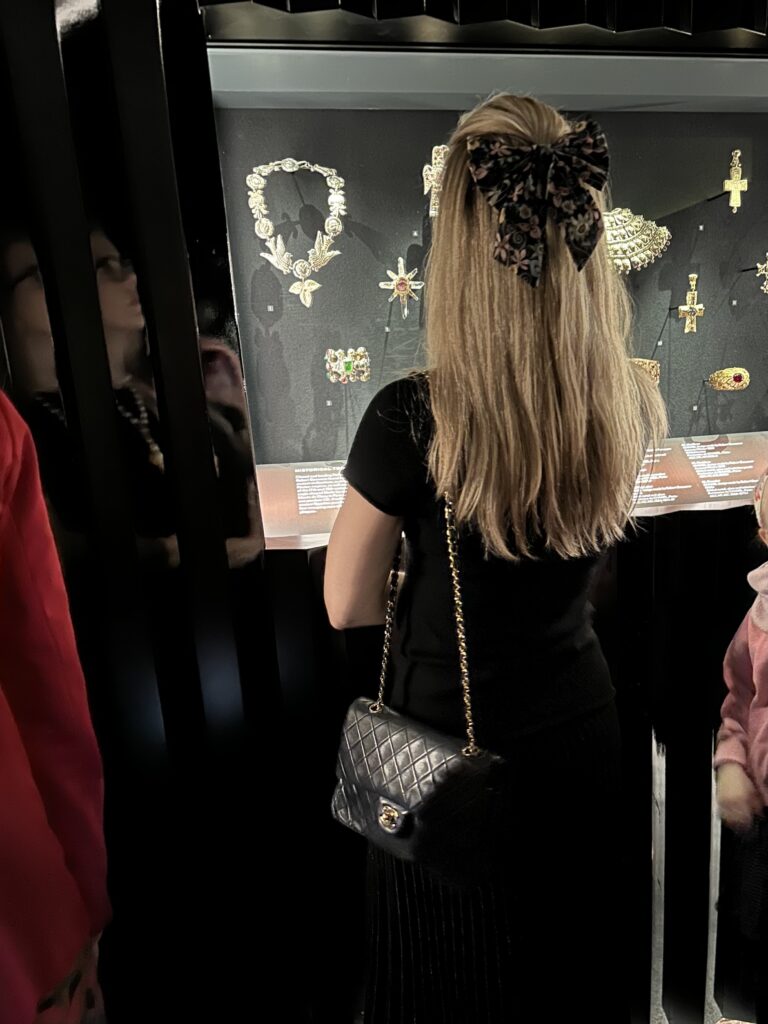
In front of one of the exhibition’s cases.
Chanel loved antique and vintage jewelry. She would visit the Louvre Museum in Paris to find inspiration for her jewelry designs from its Medieval, Renaissance, Baroque and Mughal Indian collections. She looked at actual antique pieces as well as studied the jewelry depicted in the museum’s paintings and books. Sometimes Chanel would ask her jewelry ateliers to copy an actual antique setting but mostly she would request that they come up with their own designs based on the antique inspirations. She requested that pieces be created to look as if they had just been excavated. She didn’t want them to look too shiny and new. The historical references in Chanel’s jewelry gave the pieces a timelessness.

Chanel bird brooch made by Robert Goossens in the 1960s.
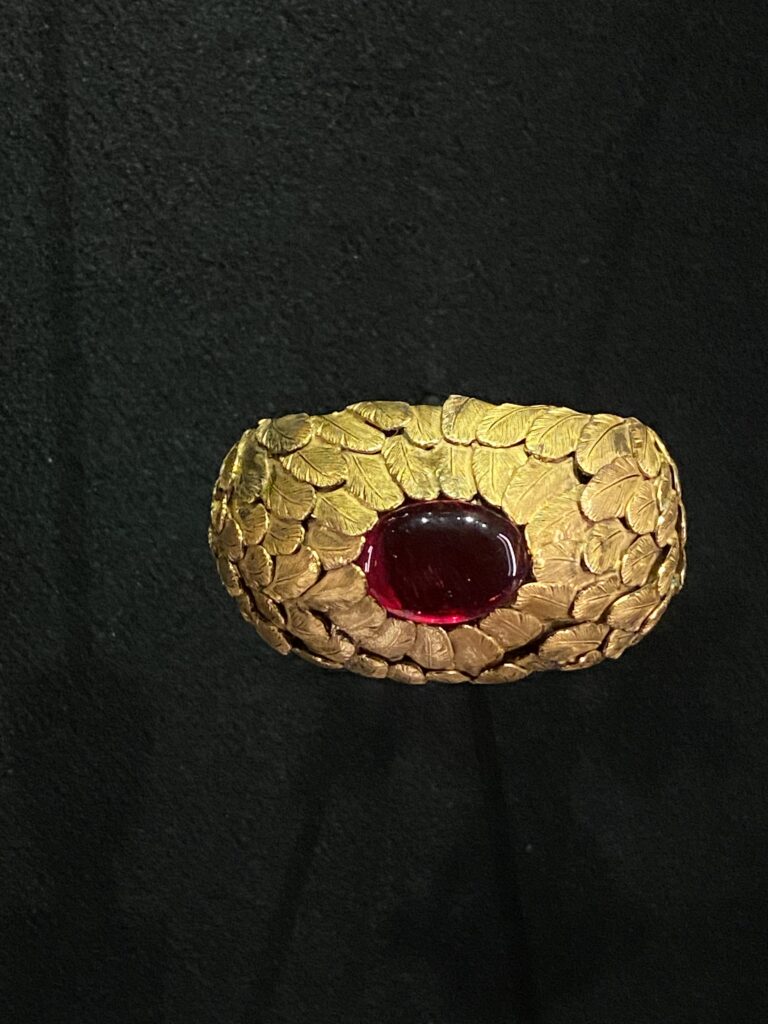
Chanel cuff bracelet made by Robert Goossens in the 1960s.
During the 1950s relaunch, Chanel continued to work with Maison Gripoix which created Chanel’s strands of faux glass pearls as well as beautifully crafted poured glass pieces. Additionally, Chanel began working with Robert Goossens – a trained goldsmith who also had experience working with glass, enamel, shell, leather, and wood. Goossens had an historical knowledge and love of antique jewelry which fit in very well with Chanel’s aesthetic.
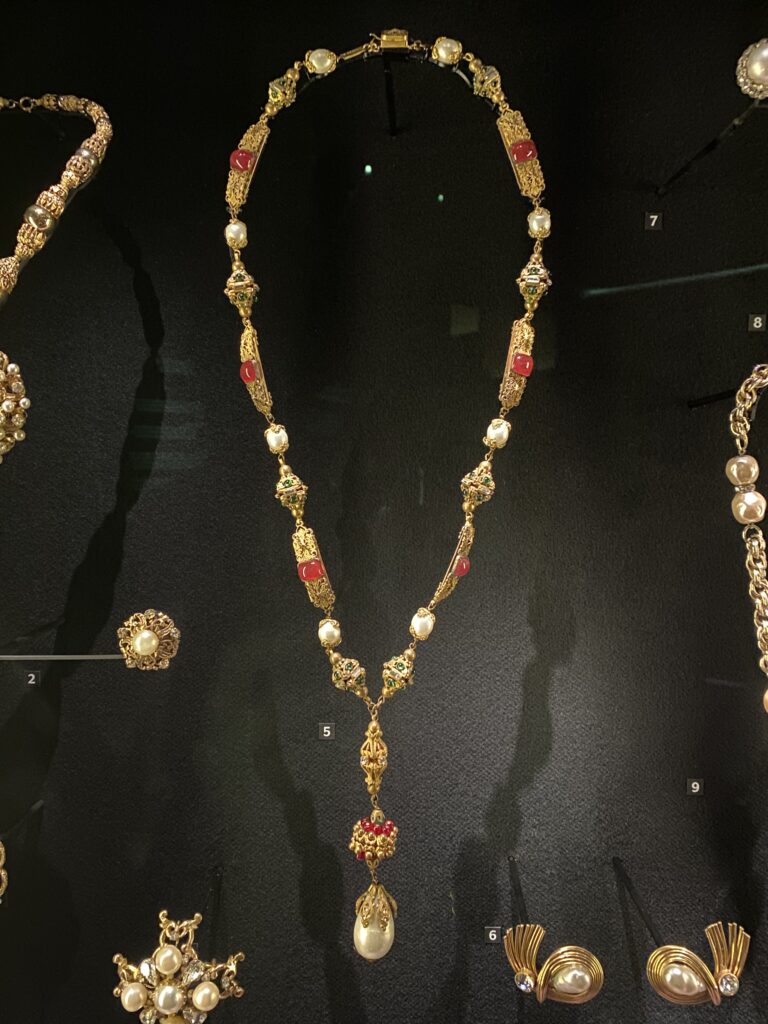
Chanel necklace made by Robert Goossens in the 1960s.

Chanel costume jewelry played a crucial role in complementing and providing contrast to the minimalist style of much of the house’s clothing design. Chanel herself was a pioneer in the creation and acceptance of high-end costume jewelry. For Chanel as a company the costume jewelry has become as much of a signature for the house as the tweed suit, quilted handbag, and Chanel no. 5 perfume.
Stuart Dyer is the owner of Ladybug Vintage
follow @ladybugvintage on Instagram
or go to ladybugvintage.com



